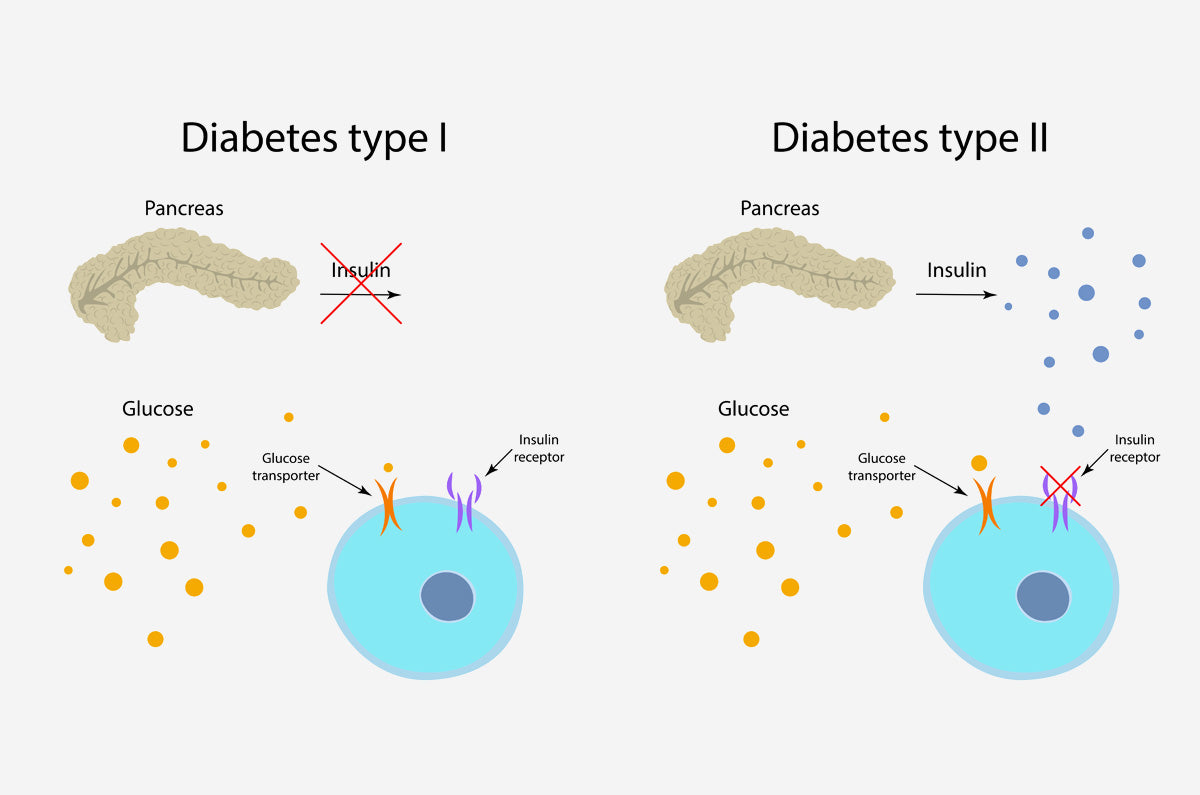Whether you’re living with type 1 or type 2 diabetes, checking your blood glucose levels is essential to effective diabetes management. It helps you identify highs and lows, understand how your treatment plan is working, and correlate lifestyle variables with blood glucose trends. While new medications can help mitigate hypoglycemia and hyperglycemia, it’s important to still check your blood glucose levels.
Two of the most important times to check your blood glucose levels are before and after meals. This allows you to better understand how your meal and medication (if applicable) affect your glucose levels.
This article will discuss the basics of pre- and post-meal glucose levels, the significance of postprandial glucose, and the importance of checking your pre and postprandial glucose levels.
Key Takeaway:
Pre and postprandial glucose levels refer to your glucose levels before and after a meal, respectively. The American Diabetes Association recommends the following targets for non-pregnant adults living with diabetes:
Preprandial plasma glucose: between 80-130 mg/dL
Postprandial plasma glucose: less than 180 mg/dL
Pre and Postprandial Glucose Levels 101
Checking your blood glucose levels before and after a meal is a form of “paired testing.” Paired testing refers to checking your blood glucose levels before and after a specific event to determine how that event affected your glucose levels. In this case, the event is consuming a meal.
Although checking pre and postprandial glucose levels can benefit anyone living with diabetes, it’s often recommended for individuals on multiple daily injections (MDI) or insulin pump therapy.
After you eat a meal, your blood glucose levels rise as your body begins to break down food into sugars. These levels tend to peak one to two hours after you start eating a meal. In general, checking blood glucose levels one to two hours after the start of a meal provides enough time for your body to digest the food and for the insulin to act. Of course, you should always speak to your healthcare team to determine an appropriate blood glucose monitoring routine.
| Recommended Time of Measurement | ||
| Recommended Target Range | ||
The Significance of Postprandial Glucose Levels
Research has established a strong correlation between postprandial glucose levels and glycemic control. More specifically, postprandial hyperglycemia (elevated postprandial glucose levels) is associated with suboptimal glycemic control.
Additionally, postprandial hyperglycemia has been suggested as a direct and independent risk factor for cardiovascular disease, a common diabetes-related health complication. Emerging evidence suggests that postprandial hyperglycemia may independently predict the occurrence of cardiovascular events in people living with diabetes.
The Importance of Checking Pre and Postprandial Glucose Levels
Understanding how various lifestyle factors like diet affect blood glucose levels can help you and your healthcare team optimize your daily diabetes management, improve your glycemic control, and reduce the risk of experiencing diabetes-related health complications.
By using a blood glucose tracking app, like the Patterns® for POGO Automatic® app, you can gain greater insights into factors that affect your blood glucose levels. Patterns syncs with the POGO Automatic Monitor to log your pre and postprandial blood glucose levels. It also imports data from popular wellness apps, giving you a convenient and easy way to track variables such as carbohydrate intake, exercise, mood, medication, and hydration. By presenting information via user-friendly visuals and custom reports, Patterns helps you and your healthcare team understand how different variables affect your blood sugar levels and empowers you to make meaningful changes.
Beyond helping you and your healthcare team assess how food affects your blood glucose levels, pre and postprandial glucose levels can serve several other purposes:
- Preprandial glucose levels (along with meal carbohydrates) are often used to determine an appropriate insulin dose.
- Postprandial glucose levels can help you and your healthcare team determine if your insulin or medication doses need to be adjusted.
Discreet, on-the-go, all-in-one glucose testing.
POGO Automatic is the only FDA-cleared blood glucose monitor that lances and collects blood automatically, in one simple step, with its 10-test cartridge technology, eliminating the need to carry separate lancets and test strips. Reach out today to learn more about how you can check your blood without interrupting your day.

|
Jaclyn OwensJaclyn Owens is a product director specializing in diabetes management tools. She is committed to using technology to empower people with diabetes and help them take control of their health. |
All content on this website is for educational purposes only and does not replace the guidance of your healthcare practitioner. Always seek the advice of your physician or other qualified healthcare provider with any questions you may have regarding a medical condition or treatment and before undertaking a new healthcare regimen, and never disregard professional medical advice or delay in seeking it because of something you have read on this website.
PL000418 Rev A




